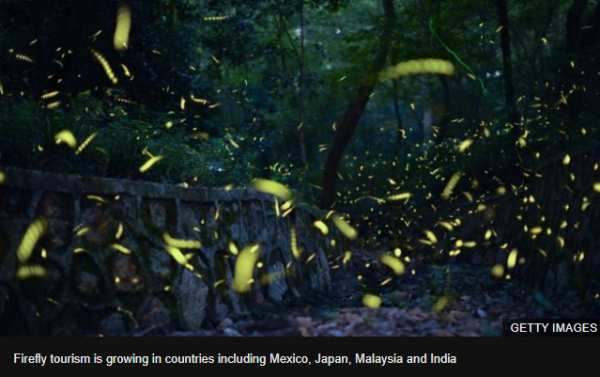-
Posts
20,849 -
Joined
-
Last visited
-
Days Won
49
Everything posted by CaaC (John)
-
I found this film on Youtube and as I read the book by John Grisham I thought I would watch it which I did with the wife and quite enjoyed it and an 8/10 for me, 'A Painted House' (2003), apparently it was a series on tv way back starring John Glenn, Grisham normally writes legal dramas and he tried his hand at writing this book and it came out on top. A Painted House
-
Deforested parts of Amazon 'emitting more CO2 than they absorb' Up to one-fifth of the Amazon rainforest is emitting more CO2 than it absorbs, new research suggests. Results from a decade-long study of greenhouse gases over the Amazon basin appear to show around 20% of the total area has become a net source of carbon dioxide in the atmosphere. One of the main causes is deforestation. While trees are growing they absorb carbon dioxide from the atmosphere; dead trees release it again. Millions of trees have been lost to logging and fires in recent years. The results of the study, which have not yet been published, have implications for the effort to combat climate change. They suggest that the Amazon rainforest - a vital carbon store, or "sink", that slows the pace of global warming - may be turning into a carbon source faster than previously thought. Every two weeks for the past 10 years, a team of scientists led by Prof Luciana Gatti, a researcher at Brazil's National Institute for Space Research (INPE), has been measuring greenhouse gases by flying aircraft fitted with sensors over different parts of the Amazon basin. What the group found was startling: while most of the rainforest still retains its ability to absorb large quantities of carbon dioxide - especially in wetter years - one portion of the forest, which is especially heavily deforested, appears to have lost that capacity. FULL REPORT
-
Suite Francaise (2014), a World War II Drama/Romance film and I quite enjoyed it watching it with the wife, 8/10 for me.
-
Snowing here and they say more to come, love it, it's eased off a bit now and the son's just come home for his tea from doing his taxi bit and he said the fares have been good because of the snow.
-
-

Manchester United Discussion
CaaC (John) replied to a topic in Premier League - English Football Forum
Shame really but there you go, Conte seems to have the Midas touch on the guy. -

Manchester United Discussion
CaaC (John) replied to a topic in Premier League - English Football Forum
I wonder if Ole now regrets getting rid of Lakaku, scored again last night and helped Inter to go top of the pile. -
The release clause of Napoli's 28-year-old Senegal defender Kalidou Koulibaly, who has been linked with Manchester United, will be active from June - but it is £127m. (Mirror)
-
Neolithic Czech well claimed as the world's oldest wooden structure Wooden well uncovered in the Czech Republic is the ‘World's Oldest Manmade Timber Structure' Archaeologists claimed Tuesday that a Neolithic well found in the Czech Republic was the world's oldest uncovered wooden structure, citing extensive tests. "We have carried out a dendrochronological analysis and confirmed it with radiocarbon dating," said Jaroslav Peska from the Archeological Centre in the eastern Czech city of Olomouc. "The well dates back to 5,256-5,255 BC. There is currently no older man-made wooden structure dated by dendrochronology in the world, although this may change in the future," Peska told AFP. Originally about four metres (yards) deep, the well was found in 2018 at the site of a future motorway about 120 kilometres (75 miles) east of the capital Prague. "We dug up a lower wooden part of the well that is 1.4 metres high and which rose to the surface," said Peska. The CTK news agency reported the well had wooden posts in corners with grooves for planks, a technology that scientists thought had been used much later. The archaeologists removed the well together with soil which is also being tested to give scientists an idea of the environment of the Neolithic era, the last period of the Stone Age. "The well is under conservation now, and when that's done, it will be taken to a museum in (the nearby city of) Pardubice in about two or three years," said Peska. https://www.msn.com/en-gb/news/offbeat/neolithic-czech-well-claimed-as-worlds-oldest-wooden-structure/ar-BBZETtX#image=1
-
- 1,657 replies
-
- space exploration
- astronomy
-
(and 1 more)
Tagged with:
-
Nah, I will just lye on the sofa and fall asleep, me snorring she said I sound like a train going through a tunnel with its horn blasting
-
It's bloody annoying though as she never did that when we watched Peaky Blinders, we watched all the episodes together.
-
The wife did the same with The Crown, started to watch it but I lost track in the end as the wife watched all the episodes in a week.
-
What is Solar Orbiter and what's it going to do? Many scientists are calling it the UK's most important mission for a generation.
- 1,657 replies
-
- 1
-

-
- space exploration
- astronomy
-
(and 1 more)
Tagged with:
-
This storm Ciara is casing havoc up here, Waverly main railway station is closed and Roseburn is flooded, that's just up from Murrayfield Rugby ground. Storm Ciara
-
Science & Environment Fireflies face extinction risk - and tourists are partly to blame Firefly tourism is on the rise globally but scientists are warning it may contribute to the risk of the insect's extinction. "I spotted a hundred flickering lights, illuminating a palm like a Christmas tree." "Our guide waved his flashlight at the fireflies. They slowly engulfed us - we were surrounded by a shiny galaxy of glowing beetle stomachs." "I reached out a hand and captured one in my fist." Reading this travel blogger's enchanting experience in 2019 makes it clear why firefly tours are popular but done badly, it risks killing the insects. Habitat loss and light pollution from urbanisation and industrialisation are the leading threats to firefly populations, according to research published this week. But firefly tourism, which attracts thousands of visitors in countries including Mexico, the US, the Philippines and Thailand, is a growing concern for conservationists. "Getting out into the night and enjoying fireflies in their natural habitat is an awe-inspiring experience," Prof Sara Lewis at Tufts University, who led the research, told the BBC. But tourists often inadvertently kill fireflies by stepping on them, or disturb their habitat by shining lights and causing soil erosion. Firefly festivals are organised in countries including Japan, Belgium, and India, and social media is magnifying this tourism, she adds. How tourism can kill fireflies The tiny town of Nanacamilpa in Mexico became a celebrated firefly spot in the past decade. Some visitors post their sparkling photos on Instagram, flouting the ban on photography that many site managers impose, says local photographer Pedro Berruecos. The Mexican fireflies are especially vulnerable to tourists, Prof Lewis explains. FULL REPORT
-
-
Liverpool have opened talks with Netherlands midfielder Georginio Wijnaldum, 29, about extending his contract, which expires in the summer of 2021. (Athletic, via Express)
-
@Devil-Dick Willie, @Harry and all the other Aussies, anywhere near you? Menacing bats swarming small Australian town The fearsome flock has swooped in on the town’s botanical gardens and is perched in trees near schools. Even more worrisome for residents is that the colony appears to be expanding. “It’s like a bat tornado over the town,” explained resident Adam Kaurila, who is considering yanking his two daughters out of school over bat exposure and scratch alarms. The biggest concern when it comes to bat bites and scratches is lyssavirus, a disease similar to rabies. Three cases have been confirmed Down Under — all fatal. Kaurila’s wife also expressed apprehension for her kids’ safety. "They’re not stepping a foot in that ground until something is, we know that is, being done, said his wife, Susanne. Bats are a protected species under Queensland law, meaning the city council is limited in how it can manage them. While nonlethal methods such as noise, smoke and light are effective deterrents, they can’t be utilized while the bats are breeding, according to news.com.au. In Charters Towers — located about 150 miles southwest of Ingham, residents there are also coping with a severe bat problem. One Aussie politician says enough is enough. “There comes a point where I think breaking the law really becomes ‘dogging it,’ as we say in North Queensland,” said state representative Bob Katter. “And I think that point has probably been reached.” https://www.msn.com/en-gb/news/offbeat/menacing-bats-swarming-small-australian-town/ar-BBZMM83
-
Need a hand? Incredible moment orangutan reaches out to help a conservationist who looked stuck in the river as he cleared snakes from apes' habitat SLIDES - 1/4 This is the heartwarming moment an orangutan tries to assist a man stood in a river by offering its outstretched arm. The great ape, who lives in a protected conservation forest area in Borneo, was seen leaning forward and lending a helping hand to the man who had been in the muddy river searching for snakes. The striking images were taken by amateur photographer Anil Prabhakar, from Indonesia, who had been on a safari with his friends when he spotted the touching scene. Mr Prabhakar later found that the man worked for the Borneo Orangutan Survival Foundation- a non-profit organisation aimed at protecting the endangered species. The worker had been clearing away snakes in an effort to guard the orangutans when he was interrupted by the inquisitive ape. However, the amateur photographer revealed the man refused the orangutan's hand after he put away the camera - as it was a wild animal. Mr Prabhakar said: 'Someone told him there was a snake in the river. The warden went there and cleared the bushes. 'An orangutan came to the banks and was watching what he was doing. He then came closer and gave his hand. 'The warden just moved away. I asked him why later and he said: ''It's a wild animal, not one we are familiar with''. 'But they are to protect them.' The Borneo Orangutan Survival Foundation is an Indonesian non-profit organisation founded in 1991. The foundation, which has 400 members of staff, is currently taking care of almost 650 orangutans. https://www.msn.com/en-gb/news/offbeat/need-a-hand-incredible-moment-orangutan-reaches-out-to-help-a-conservationist-who-looked-stuck-in-the-river-as-he-cleared-snakes-from-apes-habitat/ar-BBZJfTR?li=AAnZ9Ug#image=4
-
Quite surprised he came out like that on the show but good on him I suppose, better than keeping it quiet and the tabloid press like the Sun & Star hearing about it from somewhere else and then plastering it all over their front pages as a scoop just to sell their papers.
-
-
OneWeb: London start-up launches the first big batch of satellites The UK-based OneWeb company has sent 34 satellites into orbit on a single Soyuz rocket from Baikonur in Kazakhstan. The start-up is building a mega-constellation in the sky to deliver broadband internet to all corners of the globe. Six spacecraft were lofted in 2019 to prove the technology, but this year will see big batches of platforms going up on a near-monthly basis. The aim is to have the full network in operation by the end of 2021. OneWeb is in a race with a number of other companies that want to provide the same kind of service. FULL REPORT
- 1,657 replies
-
- space exploration
- astronomy
-
(and 1 more)
Tagged with:
-

Tottenham Hotspur Discussion
CaaC (John) replied to a topic in Premier League - English Football Forum
Tottenham's English defender Japhet Tanganga, the 20-year-old home-grown product, is in talks over a 1,500% pay rise from his current £1,000 per week salary following his first-team breakthrough. (Mail) -
Rare fossil of bone-crushing crocodile cousin found in Brazil Rodrigo Müller was working a block of rock and dirt at the base of Agudo Hill, an hour from Porto Alegre when he first saw an unusual set of osteoderms, bony deposits that form plates on the skin of a reptile or amphibian. “It was a surprise because we had never seen anything like this in Brazil before,” Müller, a palaeontologist at the Federal University of Santa Maria, says of what was otherwise an ordinary visit to the Janner dig site, once home to some of the earliest dinosaurs to roam Earth. As he continued his delicate work, he brushed dirt from an intact cranium and several other fossilized bones. Together, the collection formed a well-preserved and almost complete skeleton of a rare Ornithosuchidae reptile, a family considered cousins to today’s crocodiles and alligators that had been previously recorded only in Argentina and Scotland. Dated to 230 million years ago, Dynamosuchus collisensis—newly named for its powerful bite and the location of the find—was described January 31 in the journal Acta Palaeontologica Polonica by a team that includes Müller’s colleagues at Argentina’s Museo de La Plata and Virginia Tech in the United States. Only three other species of Ornithosuchid have been discovered in the world, the last of which was found in Argentina and described 50 years ago. While its bite could crush bones and its blade-like teeth tore through meat, Müller and company believe Dynamosuchus collisensis was a slow scavenger, or necrophagous, similar to the vultures and hyenas of today. It fed mostly off animal carcasses and easy-to-catch prey, meaning it filled a crucial part of the food chain that palaeontologists hadn’t known existed in this region of Brazil until now. “It helps us understand better how that ecosystem worked,” Müller says. Without scavengers like the Dynamosuchus collisensis, carcasses and other organic waste would pile up rather than breaking down. This decay allows plants to absorb essential nutrients. Those plants then feed herbivores and omnivores, allowing the cycle to continue. Bone bonanza This Triassic reptile was quite large compared to other animals that lived during the period, measuring roughly seven feet in length. Unlike its modern relatives, Dynamosuchus collisensis was terrestrial. Its four limbs swung underneath its body and not at its sides, while its osteoderms ran in two protective rows down its back. It stalked around forested areas surrounded by rivers, alongside some of the oldest known dinosaurs in the world, mammal ancestors called cynodonts and other reptiles like rhynchosaurs. The newly revealed fossils connect the evolution and interactions between the landmasses where Ornithosuchidae lived, which at the time, were all part of the supercontinent Pangaea. The animal discovered in Brazil is more closely related to one of the specimens found in Argentina than the two specimens in Argentina are to each other. This finding indicates the fauna exchanged members over long distances and didn’t evolve in an isolated fashion, Müller says. “The fact that you have organisms that are very close in terms of kinship in Brazil and Argentina during the same time period indicates a similarity in environment and ecologies, although each region had differences that promoted speciation,” says Marco Aurélio Gallo de França, a palaeontologist from the Federal University of the Valley of San Francisco who did not take part in the discovery. Thanks to the intactness of the Dynamosuchus collisensis fossil, Müller and the other researchers can run further tests on the strength of the reptile’s bite, using CT scans to create 3D digital models. “It’s really well preserved. There’s practically no deformation in any of the bones, and there’s a good part of the cranium and the postcranial skeleton, so it’s very complete for this type of animal,” Müller says of the fossil. “There’s so much information in those bones.” https://www.msn.com/en-gb/news/offbeat/rare-fossil-of-bone-crushing-crocodile-cousin-found-in-brazil/ar-BBZHnvW?ocid=mailsignout


.thumb.png.c1588edf99f05c0c91ceb6a98aadbe0f.png)

.png.f0cd64ea62cd41db8c23b6630c1f36ed.png)





.thumb.png.2aa0949631bcefd9942c3f8bef2ebb3d.png)









